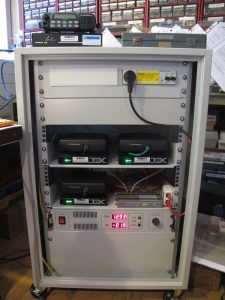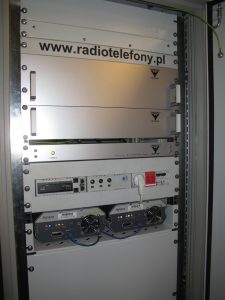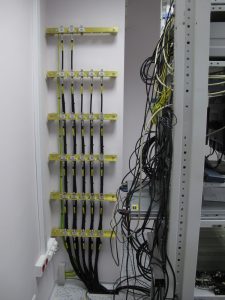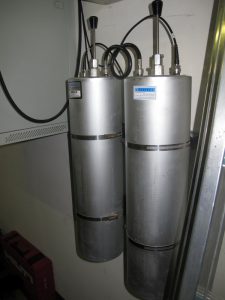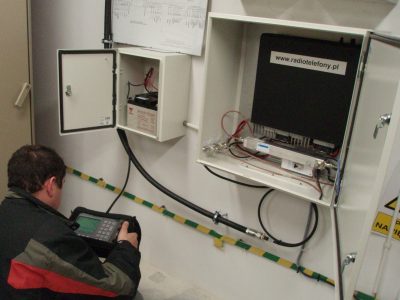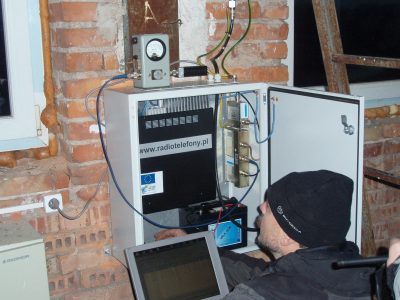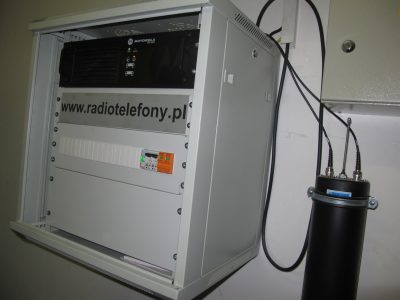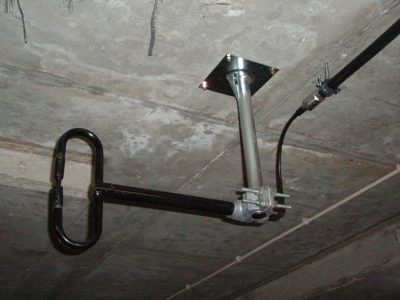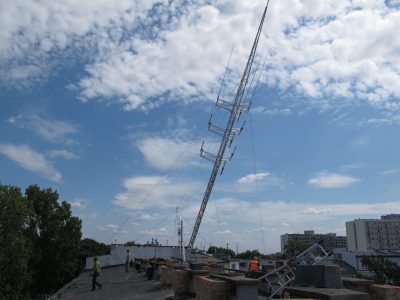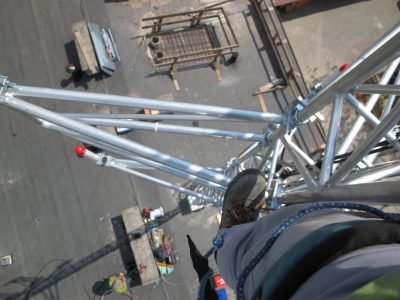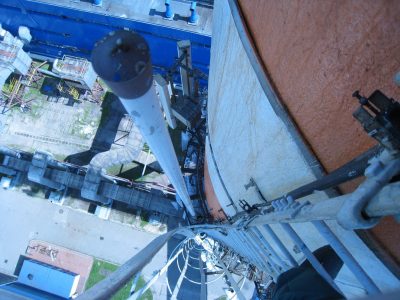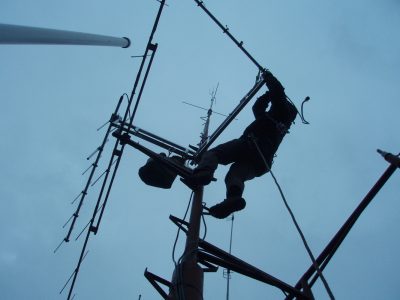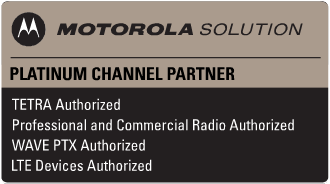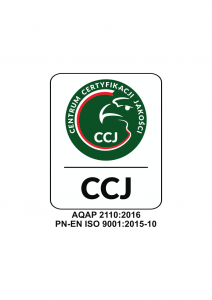Installing a radio system in construction objects is usually associated with a necessity of locating a base station or a repeater in the given object.
A typical installation of a base station involves fitting a radiotelephone together with its audio accessories (a microphone, an external loudspeaker, a signalling device), fitting a power supply system (a power supply and alternatively an uninterruptable power supply – UPS), installing antenna feeder and an antenna with a lightning arrester. In case of the occurrence of any extraordinary circumstances, we are able to provide technical accessories enabling appropriate installation of the devices. The final stage of the installation process is programming the radiotelephone and checking the antenna system effectiveness.
- Motorola remote controlled stations used during NATO summit in 2016
- Hytera retransmission stations operating on Legia Warsaw stadium
- Aerial field lightning arresters in a Military Unit
- Sinclair – Cavity filters on INTRACO building in Warsaw
Remote controlled base stations constitute a particular case. This solution is used when a dispatcher stays in a control room of a building (e.g. a control room of an electricity facility) where the aerial system cannot be installed high enough. Then, a base radiotelephone is physically installed on the top of a building (e.g. an office building attic) whereas the control panel of the radiotelephone is located in a dispatcher’s room (e.g. a control room). Both parts are connected either by means of a dedicated telephone line (one or two pairs) or by means of an IP network. Thus, an operator uses a radiotelephone in the way as it was installed locally, however a long range of communication is basically possible due to the location of the antenna of a remote Rx/Tx module of a radio in the high point of the facility.
- Retransmission station in HILTON hotel in Warsaw.
- Border guard retransmission station in Sejny.
- Motorola retransmission station in Warsaw Municipal Office.
- UHF dipole antenna in the underground car-park.
The mentioned earlier repeater is (in contrary to the base station) a dispatcher free element of a communications network, usually installed in the possibly highest and most central point of the network. Its basic function is to extend the network range by means of receiving a signal from one network user and retransmit it to the other ones. Due to the relatively high location of the retransmitting antenna, the network equipped with such a device can significantly extend the area of its operation. The basic difference between installation of a repeater and a base station is much more developed aerial system, thus requiring very effective lightning protection. Contemporary (digital) retransmission stations can be linked by means of an IP backbone network, which enables the network to operate in much more extended areas.
- Erecting an antenna mast on the Police Station building in Warsaw.
- Installing antennas on the Police Station building mast.
- Aerial system maintenance in PEC Siedlce.
- Installing antennas on the mast of a PSP building in Augustów.
The way particular elements of a communications network are installed in a building as well as their type, strictly depend on the tasks the network is to perform (requirements concerning the range and reliability) and a specific character of the building (type of a roof, a mast, a chimney etc.). However, the key element deciding about how wide radiotelephones range can be, is an aerial system. The basic condition ensuring appropriate effectiveness of the aerial is its location in the highest possible point of a building – the antennas are usually installed on masts, either placed on the roofs or the free-standing ones. Unfortunately, the aerials located in such places are frequently exposed to lightning strikes. Therefore, companies responsible for installing such systems particularly focus on appropriate protection against any negative effects that a lightning strike might have either on any element of the equipment or the people operating them. Thus, any designed and executed aerial system has to be not only effective and durable, but above all – safe.
Our company has almost thirty years of experience in installing aerial systems including those on high constructions (masts, chimneys, estacades). While working at a height we always use certified equipment, follow all health and safety regulations as well as comply with all local safety rules biding in the company on the premises of which we are working. All materials, devices and tools used by our company for building antennas towers or installing aerial systems possess all required certificates and technical approvals and the installations we execute are all in compliance with their structural designs and meet the conditions of commissioning. Your safety means our safety.
We are fully aware of the fact that a well-designed and properly executed radio communications system would never come into being without people and their qualifications and competence. Therefore, we also offer various trainings concerning efficient use of radio communications systems.





